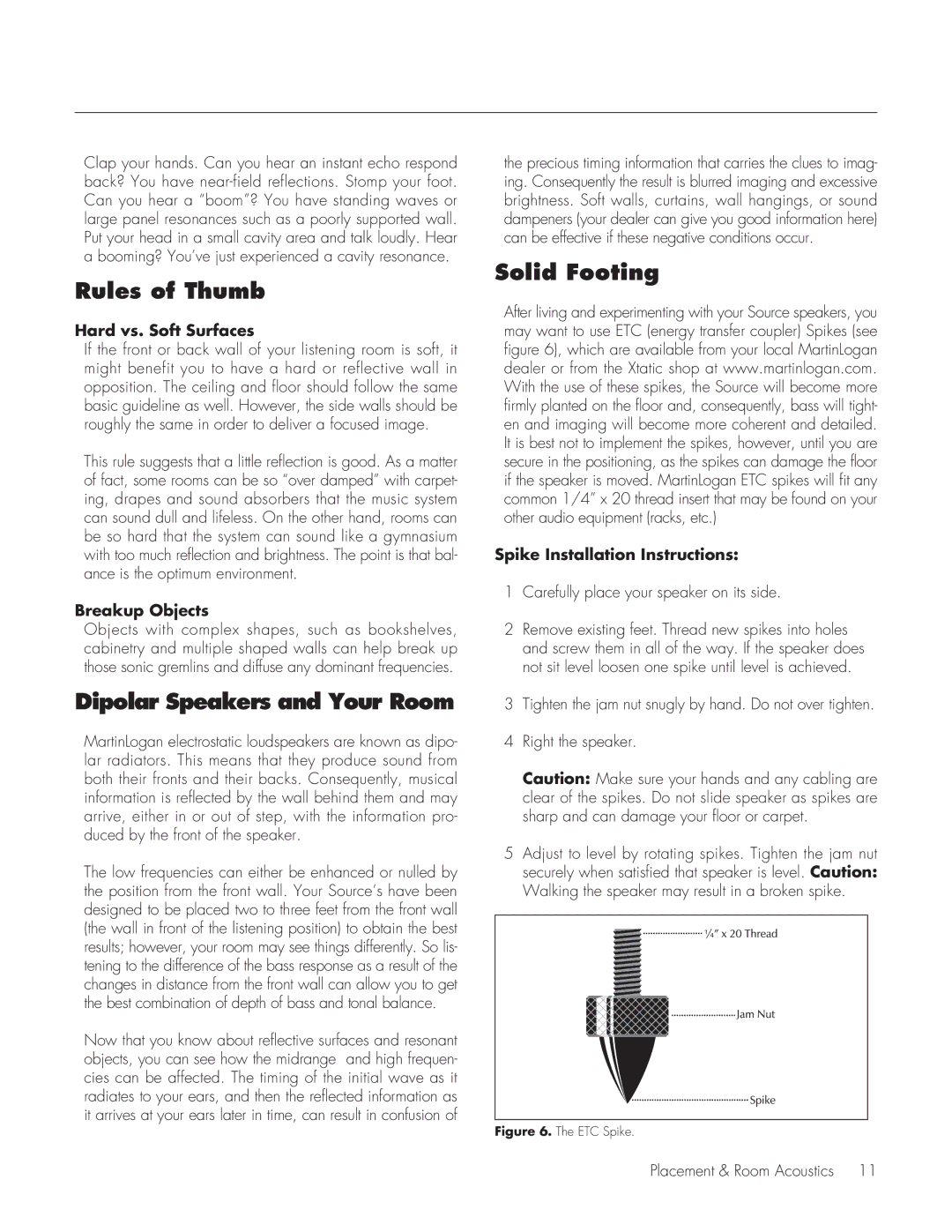Source Speakers specifications
The MartinLogan Source Speakers are a testament to the brand's dedication to high-fidelity sound and innovative design. Renowned for their stunning performance and elegant aesthetics, these speakers cater to audiophiles and casual listeners alike, seamlessly blending into any home audio setup.At the heart of the Source Speakers is their unique hybrid electrostatic technology. This innovative approach combines the purity of an electrostatic panel with the dynamic bass response of a traditional woofer. The electrostatic panel, known for its ability to recreate sound with exceptional clarity and precision, is complemented by a high-output dynamic woofer. This synergy allows the Source Speakers to deliver a full range of frequencies, from the detailed highs to the robust lows, ensuring an immersive listening experience.
One of their standout features is the Folded Motion tweeter, which utilizes a unique diaphragm that moves in a pleated fashion. This design enables the tweeter to produce greater output and higher efficiency while minimizing distortion. As a result, the Source Speakers are capable of delivering crisp, clear highs that can fill even the largest rooms.
Additionally, the Source Speakers boast a stylish and contemporary design. The elegant cabinetry is crafted from high-quality materials and finished in a range of attractive veneers, allowing them to blend harmoniously with any home decor. The speakers are also relatively compact, making them suitable for a variety of spaces, from dedicated listening rooms to casual home theater setups.
Connectivity is another strong suit of the Source Speakers, with options that include high-quality binding posts for straightforward integration with various amplifiers and audio systems. This versatility ensures that users can easily incorporate these speakers into their existing setups without hassle.
In terms of performance, the Source Speakers excel in creating a soundstage that is both wide and deep. Their ability to produce accurate spatial imaging allows listeners to feel as if they are in the center of the performance. This makes them ideal not only for music lovers but also for movie enthusiasts who crave that cinematic audio experience.
Overall, the MartinLogan Source Speakers represent a perfect amalgamation of cutting-edge technology, stylish design, and outstanding audio performance. Whether for music playback or home theater use, they offer an unparalleled listening experience that will satisfy even the most discerning audiophiles.

